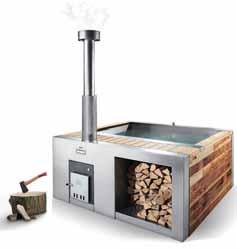54
Building Services News l January/February 2020
When nZEB may not be enough Every now and again a crystal ball comes along that helps us foresee the future and it is often worth stopping to consider how that future might affect us or our business. A crystal ball was recently launched into our sector, in the form of the Climate Action Plan: have you stopped to consider it? What are its implications for boilers, CHPs, heat pumps? Indeed, is the greater emphasis on heat pumps a fad or long-term development? Here Cian O’Riordan, Managing Director, PowerTherm Solutions, considers these questions and shares his views on these, and many other related questions. I was participating in an Energy Efficient Design (EED) kickoff meeting for a new public sector building recently and one of the public sector clients’ opening remarks was: “I know you are designing this to be nZEB-compliant, but we have a 30% absolute carbon reduction target to achieve by 2030 and all energy use by this building is going to push us in the wrong direction. So we have to exceed nZEB.” I couldn’t have wished for a better launch of the EED process. The Climate Action Plan (CAP) incorporates three key targets for the public sector: • Achieve a 50% energy efficiency improvement in buildings by 2030 (a 27% overall improvement was achieved by the end of 2018); • All public buildings are to achieve a B-rating; • Achieve a 30% absolute carbon reduction target. It is the 30% carbon reduction target that really has the public sector puzzled, challenged and
New Cian O'Riordan edit.indd 2
concerned. The larger organisations – customers and clients to many of us – are already developing strategies that will influence the design of new and the retrofit of existing buildings to 2030 and into the future. The CAP also has targets for the built environment including reducing CO2 emissions by 40-45%, sharply reducing fossil fuel use, completing 500,000 building retrofits to BER B2/ cost optimal equivalent, and installing 600,000 heat pumps. The CAP Marginal Abatement Cost Curve (the clunky name suggests the nerds rather than the marketeers are still in charge at McKinsey & Company) provides an insight into how the economy can, as costeffectively as possible, transition to a low-carbon economy. This provides the impetus to the nature of the aforementioned goals. For instance, the most costeffective step is to switch urban delivery vans from internal combustion engine to battery electric
Cian O’Riordan, Managing Director, PowerTherm Solution.
vehicles. According to analysis, the least cost-effective option – and a step which may not be essential to achieve our EU targets – is to introduce agriculture-sourced bio-methane in heat. Indeed, this analysis suggests sourcing agricultural bio-methane is going to be too expensive a choice for heating buildings and such a valuable resource would be bestdirected toward industries that really need high-grade heat. The Marginal Abatement Cost Curve suggests it will be costeffective and necessary to switch from peat and coal to wind. Indeed, the CAP envisages 70% of our electricity being from renewable sources by 2030. However, some changes will be required which will help reduce our carbon dioxide emissions, but are likely to come at a net lifetime cost. One of these is to introduce heat pumps in commercial buildings. It is clear the emphasis on heat pumps is driven by a planned greening of the grid. Air source heat pump efficiency has improved significantly, closing the gap with ground source heat pumps which have a higher installation cost. Different heat pump options are being explored: low temperature heating, bivalent/two-stage systems,
05/02/2020 15:58
















